 W
WAddington Hills is a park in Upper Shirley, London, England. It is managed by the London Borough of Croydon. It was part of the old parish of Addington before the suburb of Shirley was developed in the 1930s. The site consists largely of woodland on a gravel bed, with London's largest area of heathland at its heart. It is a Site of Metropolitan Importance. In the mid-18th century, it was a noted cricket venue used by the then-prominent Addington Cricket Club.
 W
WThe Artillery Ground in Finsbury is an open space originally set aside for archery and later known also as a cricket venue. Today it is used for military exercises, rugby and football matches. It belongs to the Honourable Artillery Company (HAC), whose headquarters, Armoury House, overlook the grounds.
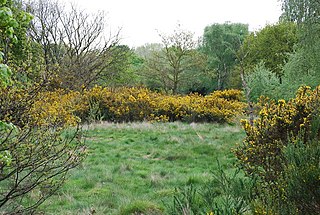 W
WBarnes Common is common land in the south east of Barnes, London, England, adjoining Putney Lower Common to the east and bounded to the south by the Upper Richmond Road. Along with Barnes Green, it is one of the largest zones of common land in London with 49.55 hectares of protected commons. It is also a Local Nature Reserve. Facilities include a full-size football pitch and a nature trail.
 W
WBarrack Field is located on the grounds of the Royal Artillery Barracks in Woolwich, southeast London. It was once part of Woolwich Common, then used as a venue for cricket matches in the 18th century and as the home of Woolwich Cricket Club at that time. Later it became the home of the Royal Artillery Cricket Club. It is now used as a generic sports field, mainly for football.
 W
WBlackheath is an area of South East London, England, straddling the border of the Royal Borough of Greenwich and the London Borough of Lewisham. It is located 1 mile north east of Lewisham, 1.5 miles south of Greenwich and 6.4 miles south east of Charing Cross, the traditional centre of London.
 W
WBourne Paddock was a cricket ground at Bourne Park House, the seat of Sir Horatio Mann, at Bishopsbourne around 4 miles (6.4 km) south-east of Canterbury in the English county of Kent. It was a venue for first-class cricket matches from 1766 to 1790.
 W
WBroadhalfpenny Down is a historic cricket ground in Hambledon, Hampshire. It is known as the "Cradle of Cricket" because it was the home venue in the 18th century of the Hambledon Club, but cricket predated the club and ground by at least two centuries. The club is in the parish of Hambledon close to the neighbouring parish of Clanfield. The club took the name of the neighbouring rural village of Hambledon, about 2.7 miles away by road.
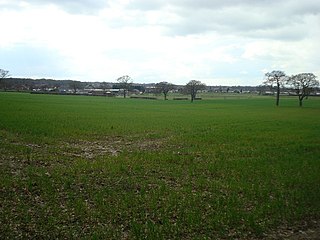 W
WBromley Common is the area of south-east London, within the London Borough of Bromley and the historic county of Kent. It lies south of Bromley town centre and Bickley, west of Southborough and Petts Wood, north of Locksbottom and Keston, and east of Hayes.
 W
WCharlwood is a village and civil parish in the Mole Valley district of Surrey, England. It is immediately northwest of London Gatwick Airport in West Sussex, close west of Horley and north of Crawley. The historic county boundary between Surrey and Sussex ran to the south of Gatwick Airport. Boundaries were reformed in 1974 so that the county boundary between Surrey and West Sussex, delineated by the Sussex Border Path, now runs along the northern perimeter of the airport, and the southern extent of Charlwood.
 W
WChingford is a town in east London, England, located in the historic county of Essex. Situated at the edge of Epping Forest, with the River Lea to the west, Woodford Green and Buckhurst Hill to the east and Walthamstow to the south, it is 8.6 miles (13.8 km) north-east of Charing Cross, and has a population of 66,211 as of 2011. It contains the areas of Chingford Hatch, Chingford Mount, Friday Hill, Hale End, Highams Park, North Chingford and South Chingford.
 W
WDartford Brent was an extensive area of common land on the outskirts of Dartford in Kent. Historically, it was the scene of a confrontation between King Henry VI and Richard Plantagenet, 3rd Duke of York in 1452 and in 1555 thousands of spectators were to witness the burning to death at the stake of Christopher Ward, a Dartford linen weaver, executed for his Protestant faith.
 W
WThe Dripping Pan is a football stadium in Lewes, England. It has been home to Lewes F.C. since their foundation in 1885. It had previously been used by Lewes Priory Cricket Club, though the ground itself had been used by the people of Lewes as an area for recreation, including athletics, as far back as written records exist.
 W
WDuppas Hill is a park, road and surrounding residential area in Waddon, near Croydon in Greater London.
 W
WEaling Common is a large open space in Ealing, West London.
 W
WEpping Forest is a 2,400-hectare (5,900-acre) area of ancient woodland between Epping in Essex to the north, and Forest Gate in Greater London to the south, straddling the border between London and Essex. It is a former royal forest, and is managed by the City of London Corporation. An area of 1,728 hectares is a Site of Special Scientific Interest and a Special Area of Conservation. It gives its name to the Epping Forest local government district, which covers part of it.
 W
WGoodwood Cricket Club is a Sunday cricket team that play in the grounds of Goodwood Park, near Chichester. The ground overlooks Goodwood House and is owned by the Duke of Richmond and Gordon.
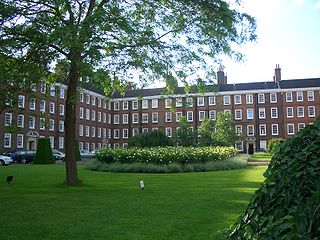 W
WThe Honourable Society of Gray's Inn, commonly known as Gray's Inn, is one of the four Inns of Court in London. To be called to the bar and practise as a barrister in England and Wales, a person must belong to one of these inns. Located at the intersection of High Holborn and Gray's Inn Road in Central London, the inn is both a professional body and a provider of office accommodation (chambers) for many barristers. It is ruled by a governing council called "pension", made up of the masters of the bench, and led by the Treasurer, who is elected to serve a one-year term. The inn is known for its gardens, or walks, which have existed since at least 1597.
 W
WThe Green Man cricket ground in Essex was used for a single first-class match between RN Newman's XI and R Leigh's XI in 1793. The location of the ground is likely to have been at Navestock Side, adjacent to a public house of the same name, on the site currently used by Navestock CC of the T Rippon Mid-Essex Cricket League.
 W
WHorsmonden is a village in the borough of Tunbridge Wells in Kent, England. The village is located in the Weald of Kent. It is situated on a road leading from Maidstone to Lamberhurst, three miles north of the latter place. The nearest railway station is Paddock Wood.
 W
WKennington Common was a swathe of common land mainly within the London Borough of Lambeth. It was one of the earliest venues for cricket around London, with matches played between 1724 and 1785. The common was also used for public executions, fairs and public gatherings. Important orators spoke there, addressing crowds numbering tens of thousands.
 W
WKew Green is a large open space in Kew in west London. Owned by the Crown Estate, it is leased to the London Borough of Richmond upon Thames. It is roughly triangular in shape, and its open grassland, framed with broadleaf trees, extends to about thirty acres. Kew Green is overlooked by a mixture of period townhouses, historic buildings and commercial establishments. In the 1730s, Kew Green was a venue for cricket matches.
 W
WLaleham Burway is a 1.6-square-kilometre (0.62 sq mi) tract of water-meadow and former water-meadow between the River Thames and Abbey River in the far north of Chertsey in Surrey. Its uses are varied. Part is Laleham Golf Club. Part, raised trailer/park homes towards its west, forms residential development; similarly a brief row of houses with private gardens against the Thames. A reservoir and water works is on the island.
 W
WLord's Cricket Ground, commonly known as Lord's, is a cricket venue in St John's Wood, London. Named after its founder, Thomas Lord, it is owned by Marylebone Cricket Club (MCC) and is the home of Middlesex County Cricket Club, the England and Wales Cricket Board (ECB), the European Cricket Council (ECC) and, until August 2005, the International Cricket Council (ICC). Lord's is widely referred to as the Home of Cricket and is home to the world's oldest sporting museum.
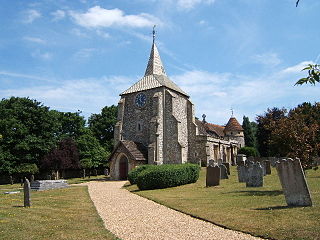 W
WMickleham is a village in south east England, between the towns of Dorking and Leatherhead in Surrey. The civil parish covers 7.31 square kilometres and includes the hamlet of Fredley. The larger ecclesiastical parish includes the majority of the neighbouring village of Westhumble, from which Mickleham is separated by the River Mole.
 W
WMitcham Cricket Green is a cricket ground in Mitcham, south London. It is the home of Mitcham Cricket Club and is reportedly the oldest cricket ground still in use, having been used for cricket since 1685.
 W
WMoulsey Hurst is in West Molesey, Surrey on the south bank of the River Thames above Molesey Lock. It is one of England's oldest sporting venues and was used in the 18th and 19th centuries for cricket, prizefighting and other sports.
 W
WThe Park was a cricket ground situated in the grounds of the mansion of George Finch, 9th Earl of Winchilsea at Burley-on-the-Hill in Rutland.
 W
WParsons Green is a mainly residential district in the London Borough of Hammersmith and Fulham. The Green itself, which is roughly triangular, is bounded on two of its three sides by the New King's Road section of the King's Road, A308 road and Parsons Green Lane. The wider neighbourhood is bounded by the Harwood and Wandsworth Bridge Roads, A217 road to the East and Munster Road to the West, while the Fulham Road, A3219 road may be said to define its northern boundary. Its southern boundary is less clearly defined as it merges quickly and imperceptibly with the Peterborough estate and Hurlingham.
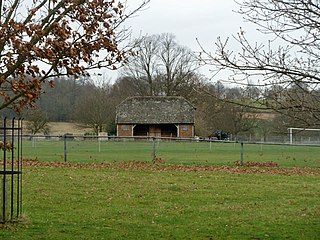 W
WPenshurst Park Cricket Ground, also known as the Earl of Leicester's Park, is a cricket ground at Penshurst in Kent. It is one of the oldest cricket venues in England. Part of the Penshurst Place estate, it hosted its first recorded match in 1724.
 W
WPeper Harow is a rural village and civil parish in south-west Surrey close to the town of Godalming. It was a noted early cricket venue. Its easternmost fields are in part given up to the A3 trunk road.
 W
WPetworth Park at Petworth, Sussex was used as the venue for three first-class cricket matches between 1824 and 1826. The ground was in front of the main house, before the cricket ground was moved to its current location nearby at Petworth Park New Ground.
 W
WRichmond Green cricket ground, on The Green at Richmond, London, has been a venue for cricket matches since the 17th century. The earliest reference to cricket here is from a 1666 letter by Sir Robert Paston, a resident of Richmond.
 W
WSanderstead is a village and medieval-founded church parish at the southern end of Croydon in south London, England, within the London Borough of Croydon and the historic county of Surrey. It takes in Purley Downs and Sanderstead Plantation, an area of woodland that includes the second-highest point in London. Sanderstead sits above a dry valley at the edge of the built-up area of Greater London. Cementing its secular identity from the late 19th century until abolition in 1965 it had a civil parish council. The community had a smaller farming-centred economy until the mid 19th century.
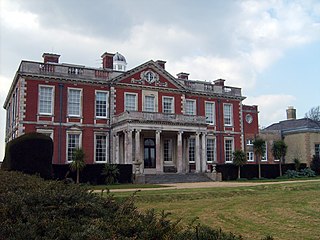 W
WStansted Park is an Edwardian country house in the parish of Stoughton, West Sussex, England. It is near the city of Chichester, and also the village of Rowlands Castle to the west over the border in Hampshire.
 W
WTothill Fields was an area of Westminster in the county of Middlesex that lay south of St James's Park on the north bank of the river Thames. One of its main features was the Tothill Fields Bridewell penitentiary.
 W
WThe Vine Cricket Ground, also known as Sevenoaks Vine, is one of the oldest cricket venues in England. It was given to the town of Sevenoaks in Kent in 1773 by John Frederick Sackville, 3rd Duke of Dorset (1745–1799) and owner of nearby Knole House. The land is thought to have possibly been used as a vineyard for the Archbishops of Canterbury.
 W
WWhite Conduit Fields in Islington was an early venue for cricket and several major matches are known to have been played there in the 18th century. It was the original home of the White Conduit Club, forerunner of Marylebone Cricket Club (MCC). Later it was used by The Islington Albion Cricket Club, who played their last game at the ground in 1834. Maps from the time show that the cricket field was a few hundred metres north of the White Conduit House, in the land surrounding the modern Richmond Crescent, and paintings suggest it was also possibly on the adjacent field to the south at the modern Barnard Park.
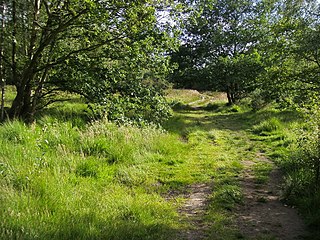 W
WWimbledon Common is a large open space in Wimbledon, southwest London. There are three named areas: Wimbledon Common, Putney Heath, and Putney Lower Common, which together are managed under the name Wimbledon and Putney Commons totalling 460 hectares. Putney Lower Common is set apart from the rest of the Common by a minimum of 1 mile of the built-up western end of Putney.